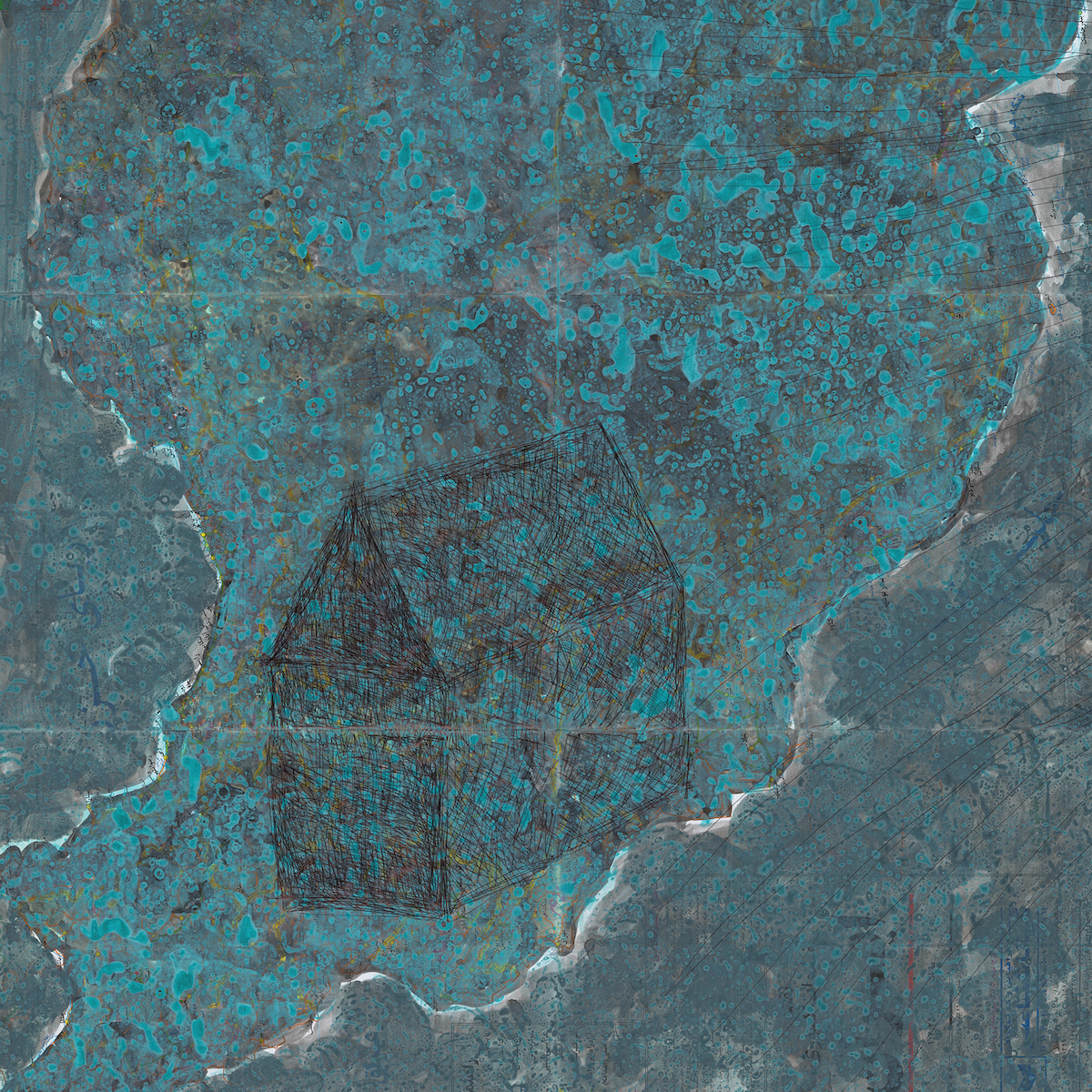Ideas of home, displacement, and migration converge in Ghazel’s latest exhibition
Walking into a gallery space punctuated with works subject to viewers’ experiences and possessing the ability to be read through those experiences: an exhilarating sensation. ‘Global contemporary’ is a moniker that commonly encompasses a tradition of obscurity for obscurity’s sake, a fearful label that connotes unapproachability for the masses. It speaks to the elitism of a world of characters that effortlessly transmigrate, hopping from one biennial to another, with other art fairs scheduled in-between. Ghazel’s work, however, is explicit in democratising thematic enterprise, and it is this plain-spoken and sensitive treatment of diaspora and exile that has made her latest solo exhibition, Mea Culpa (Latin for ‘my fault’) so successful.
Ghazel, most commonly known by her first name alone, is an Iranian artist who has been living in France since the 1980s. She pursued a formal education in visual art, completing an MFA at the École Supérieure des Beaux-Arts in Nimes. The decades following her departure from her native Iran have been devoted to developing a language that addresses processes of rupture and the growth of a set of peripheral relationships between experiences in Iran and France. Ghazel’s work has largely used performance as a conduit to understand post-Revolution Iran as viewed from a distance, although her more recent bodies of work have spanned a broad array of media.
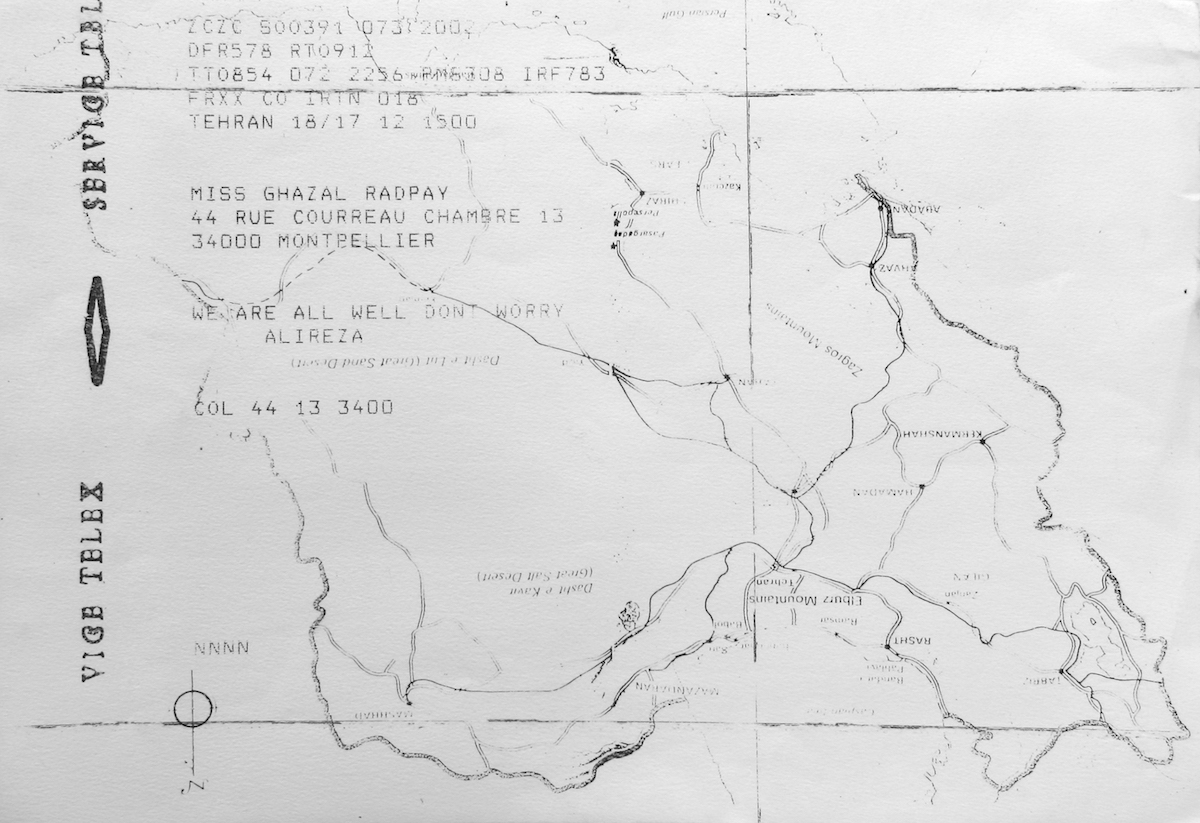
1990 (courtesy the artist and Carbon 12)
Diaspora’s inherent volatility eludes theorisation due to the multiplicity of experiences the term represents. It is addressed in her current exhibition through what she calls her vécu (French for ‘lived’), which allows for any exploration of diaspora to start with the situated quality of one’s life. It is by filtering form through the artist’s own ties to Iran that she arrives, ironically, at an exhibition that resonates with any viewers who entertain a complex relationship to ‘home’ as something that exists primarily in absentia. Her interventions – which start with materials and symbols inherently laden with meaning – speak about the itinerant lives in a manner that is refreshing when placed in conversation with the many other contemporaneous works dealing with identity crises posed by global nomadism. While much of the artistic discourse on cosmopolitanism, exile, and diaspora ends up translating the fractal quality of peoples’ movements into elusive, abstract form, Ghazel hones in on intensely readable semiotics.
Focal to this exhibition are Ghazel’s new series of drawings, executed on Persian world maps culled from stationery stores during sojourns in Tehran. Seeing maps as statements of power and privilege in their own right, the artists adds her own embellishment, subsuming land and water in rootless trees - in some instances on the maps directly, and in others, on maps painted in blue acrylic. The spread of the branches is akin to the migratory experience of being able to reach many times and places at once: the contours of Iran’s borders are sometimes traced over the entire papers. Ghazel’s choice to underlay certain pieces with blue is poetic, given that blue is an elemental colour referring both to the waters and the skies that often separate one from their homeland. These maps are subtle testaments to the ways in which human movement produces both personal growth, as well as a perennial sense of displacement.
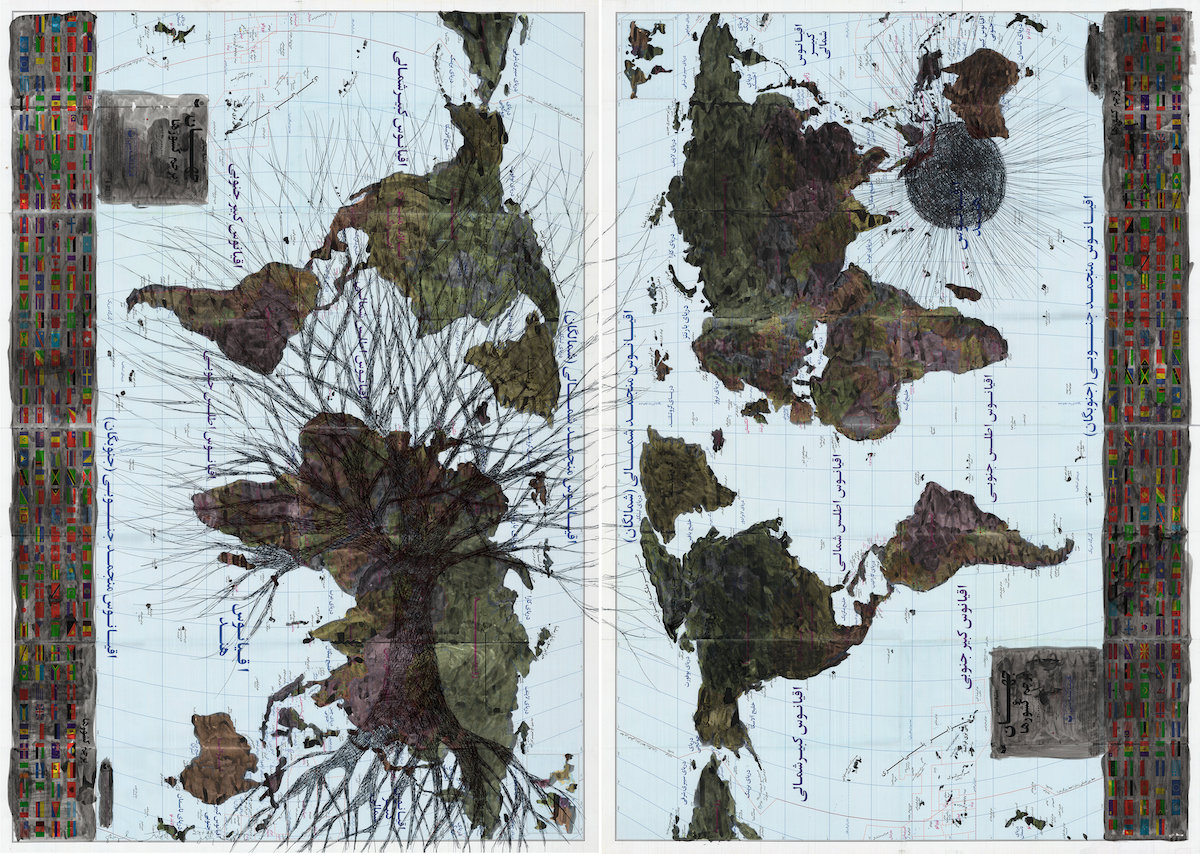
Dyslexia 1 (courtesy the artist and Carbon 12)
The maps are redeployed in Ghazel’s video, in which she folds them into paper airplanes; they take flight, but land only feet away. The sculptural distillation of this is found on the gallery floor: a pile of children’s playthings, politicised by their medium, all neatly arranged. It is a deeply moving allegory for the transience that is embedded into nomadic lifestyles, and the sense of motion written into biographies of rupture.
Ghazel has also exhibited sculptures, for the first time in over 20 years. Traveling sur Maisons is a wood-and-copper installation in which long blocks are roofed with thin metal sheets. Mimicking houses in Tehran, they immediately evoke the ways in which the idea of ‘home’ must be stretched and reconfigured to adapt to migratory change. The spontaneity of their construction and the informality of the structures have parallels across the developing world, reminiscent of quickly-erected homes in places as disparate as Mumbai and Nairobi. There is a sense throughout this exhibition that these experiences, while filtered through the artist’s own biography, have implications for a wide cross-section of the world’s mobile émigrés.
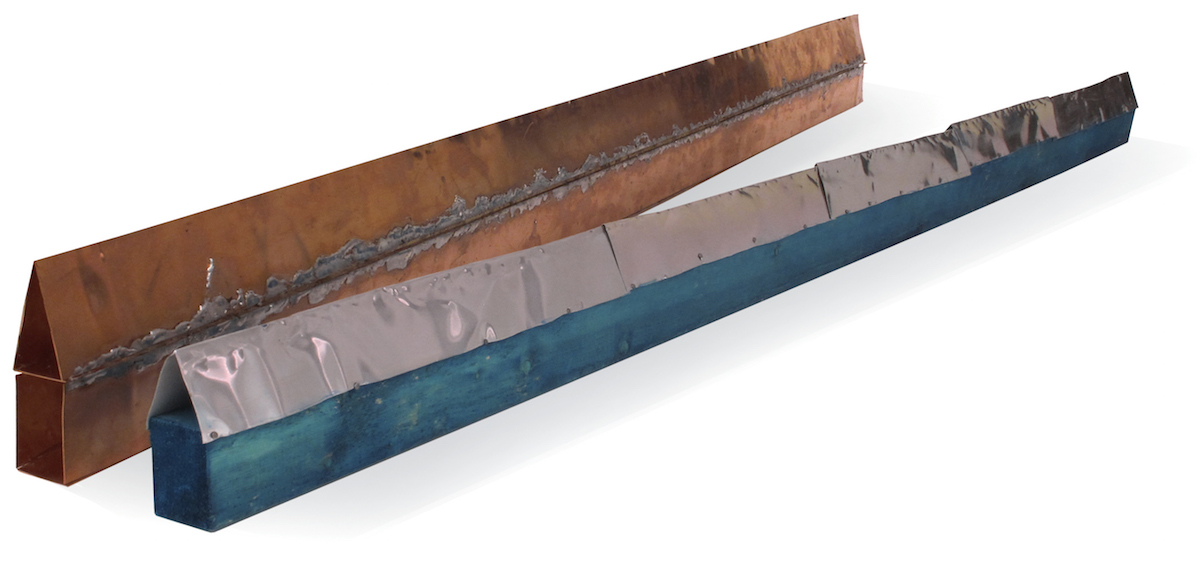
Traveling sur Maisons (courtesy the artist and Carbon 12)
The use of metal is repeated in Traveling sur Oiseaux, where it has been fashioned to replicate wings. Here, Ghazel once more centres on the notion of flight and necessary escapism. Together, the sculptures function as commentaries on the way in which people cope with the nature of exile. Their use of metal – a material as foundational as the sky and sea evoked by the artist’s use of blue – speaks to the way lives must be welded, moulded, reshaped, and retooled to be able to adapt to environmental pressures.
Mea Culpa … is the remorse for having left, but also a testament to the productive possibilities of distance, time, and affect … It reads as a poem for those who cannot shake the feeling of having left something behind
The entire exhibition, occupying the warehouse space that the Al Quoz district in Dubai has become known for, is immediately arresting in its configuration. The tenor of the works as a whole is calming and balanced, allowing viewers to absorb the quiet restlessness the works embody. It is not monumental in its scope, but rather, intimate in the space it allows for the contemplative interaction required to animate the works with stories of audiences’ travels.
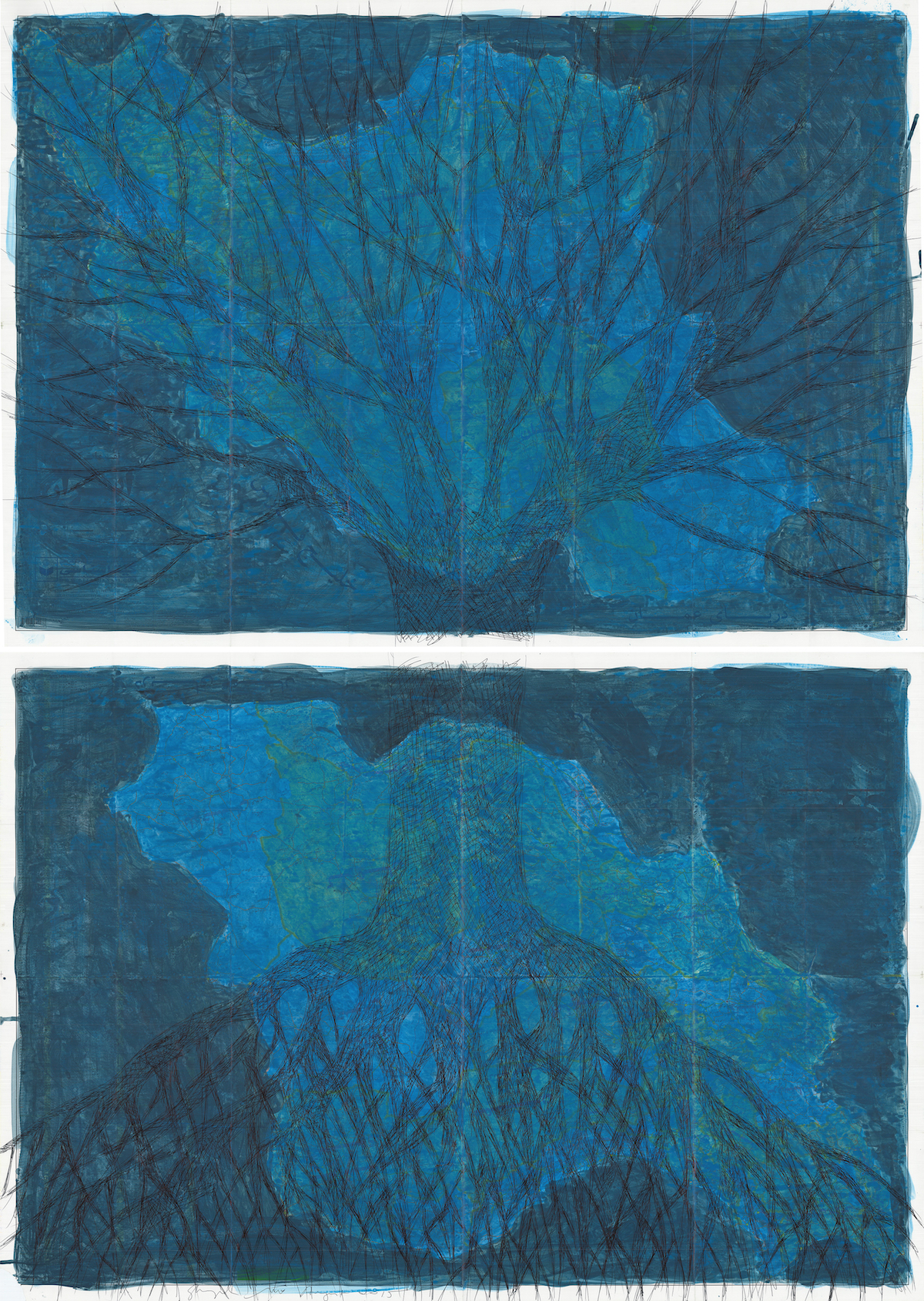
Phoenix 3 (courtesy the artist and Carbon 12)
In the attendant publication released alongside the exhibition, Ghazel comments on the uncomfortable fit for the many terms that have come to describe the type of postcolonial ‘mashups’ that are often used to categorise diasporic peoples. Her contention with the term ‘French-Iranian’ lies in the primacy given to the European nation as the first word in the hyphenation, as though her ‘Iranian-ness’ is somehow being cannibalised or linguistically colonised by her French affiliations. This is a poignant commentary on the limitations of hybridity theories that have become the cornerstones of debates on identity politics in a world that is being understood as more diffusely ‘global’. For Ghazel, her Iranian heritage operates as a particular lens through which the rest of her world dealings are filtered. This sentiment ultimately grounds the work with a set of referents – Iran, Tehran, the linguistic history of Iranian culture – that speak to the way in which an overwhelming anchor, irrespective of life mappings, returns minds to a place when bodies are unable to.
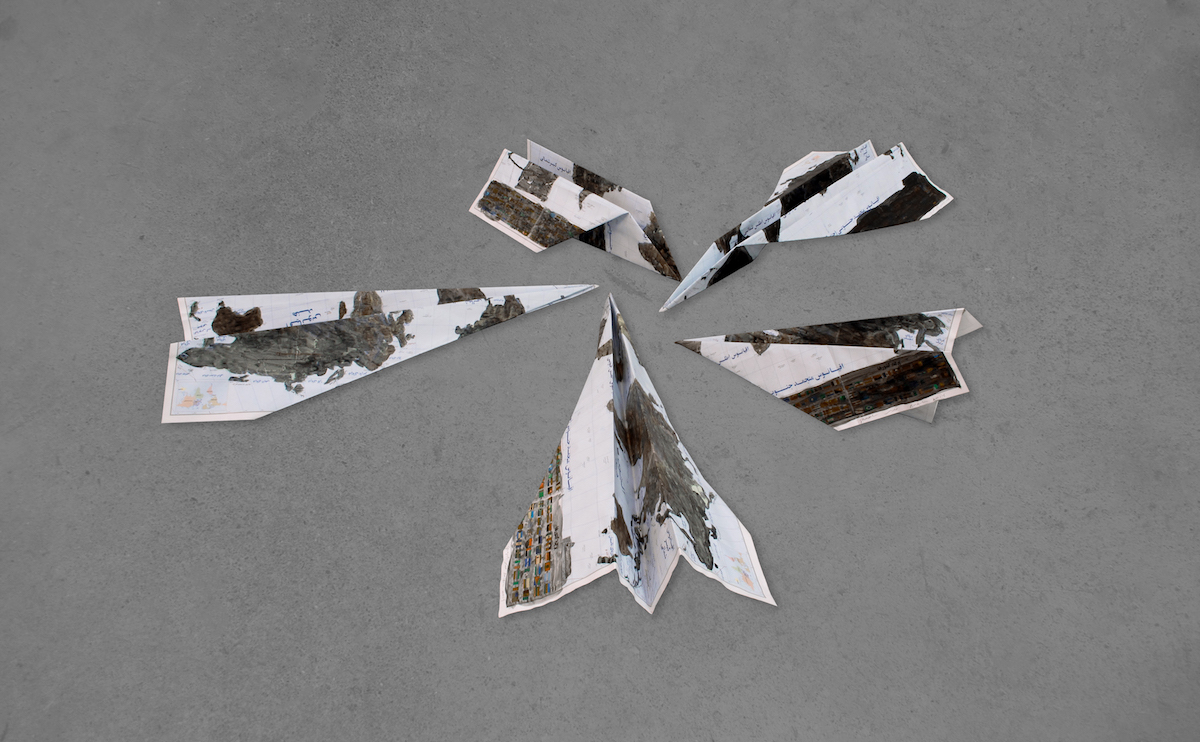
Traversées (courtesy the artist and Carbon 12)
Mea Culpa, an apology as a title, is the remorse for having left, but also a testament to the productive possibilities of distance, time, and affect. It feels strangely fitting for Dubai – a cosmopolis comprised of people from the world over. Nostalgia is a feeling easily bred in a burgeoning community of expatriates who are constantly having to negotiate their own filial lines, trying to make sense of lives lived away from other places they have called ‘home’. It is, ultimately, comforting that a set of works produced through an artist’s own very subjective experiences as an Iranian émigré in France can have such translatability for all lives that have been mapped across cities, countries, and continents. Therein lies the aesthetic achievement of Ghazel’s Mea Culpa: it reads as a poem for those who cannot shake the feeling of having left something behind.
‘Mea Culpa’ runs through May 9, 2016 at Carbon 12 in Dubai.
Cover image: Phoenix 4 (detail).
